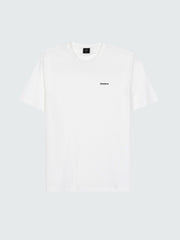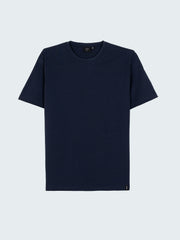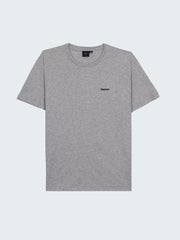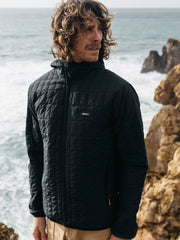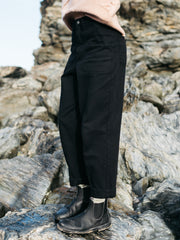For this season our design team drew inspiration from the radical attitude epitomised by 80s and 90s surf culture. A pivotal moment that catapulted surfing into the modern age, Danny Burrows explores the roots of this counter-cultural revolution and its lasting impact on wider popular culture.
80s Surfing’s Countercultural Revolution
02.06.25
4 min read
Written by Danny Burrows
Artwork by Steph Rogers
Welcome to the 80s, an age of economic, social, and technological upheaval. Change is the only constant with the world’s youth “turned on and tuned in” to a pastel spectacular of new school board riding, MTV and The Simpsons.
This is an age of upset, reset and revolution, or to paraphrase David Carson, Surfer Magazine’s design iconoclast, if you’re not disrupting the status quo then you’re doing something wrong.
At the beach, the ripples of this revolution are rolling in clean and fast, refracting back at the world in a tsunami of sun-kissed neon punk and skate inspired surf trickery. It’s a cultural shock so profound that it not only wipes out the navel-gazers of ‘70’s soul surfing - along with their single finned logs - but also diverts the trajectory of sport, music, fashion and street culture in wholly new and radical directions.
At the eye of this countercultural hurricane is Echo Beach, “the hottest 100 yards” of Californian beach break on Newport Beach, where surfers Danny Kwock, Jeff Parker, and John Gothard preside over a hollow, racy lefthander. Kwock is the frontman: charismatic, with a head for business and not shy of a camera. Jeff Parker brings the heat to the water, with a fast, fluid style that will set the bar for tearing up waves for decades to come. And John Gothard is the creative mind, busy reinventing beachwear and the black wetsuits of yesteryear in a splurge of colour, block design and broken fonts. It’s a bootleg of post-modern Memphis design that is setting the style and attitudes of a new model army of water-bound misfits.
Echo Beach isn’t happening in a vacuum, with skateboarding the match to its Molotov cocktails. Hosoi and Hawk are redefining what is possible on and above the coping, while the likes of Mullen and Rowley are busy scribing an almost illegible lexicon for street skating. And with each code they break, surfing in turn becomes more aggressive, more technical and unapologetically flash. Suddenly the whole wave and the space above it becomes a surfer’s canvas - the lip a launchpad and the foam ball an invitation to unlock and slide to the ego’s content.
This explosive progression in the water is made possible by the introduction to California of a revolutionary new board, the thruster, invented by Australian shaper Simon Anderson. This three-finned trick stick is armed with a powerful squash-tail, rocker and dynamic rails that give the likes of Parker the wings to push harder, turn faster, and get air. With radical new ways of seeing the space above the lip and avant-garde gear design, what was possible on a wave - from the sandbars of Newport Beach to the cold water breaks of Cornwall - would be forever changed.
David Carson, a surfer and the visionary designer at Surfer Magazine and Transworld Skateboarding, repeats and amplifies the sounds of the uprising. His process mirrors theirs in its attack on the conventional, in colour, form and design. His layouts also emphasise the creativity, emotion, and self-expression of what is happening at the beach, transforming the print guardians of traditional board riding culture into iconoclastic manifestos for change. Televised, the revolution that began on a wave between 54th and 56th street, Newport Beach, was inspiring cultural rebels around the globe.
Echo Beach was a pivotal moment in surf history, but it was also a movement that forever changed the way surfers saw themselves, how they read and rode waves and positioned themselves in youth culture, art and fashion. It ensured that surfing would be forever perceived as an engine of change, able to push boundaries, yet still stay true to its cultural roots. Kwock, Parker, and Gothard didn’t just ride waves, they created and rode a cultural cloud break that would rock the boat of music, fashion and culture for decades to come. And in doing so, they turned a patch of California sand into ground zero for a countercultural revolution.













